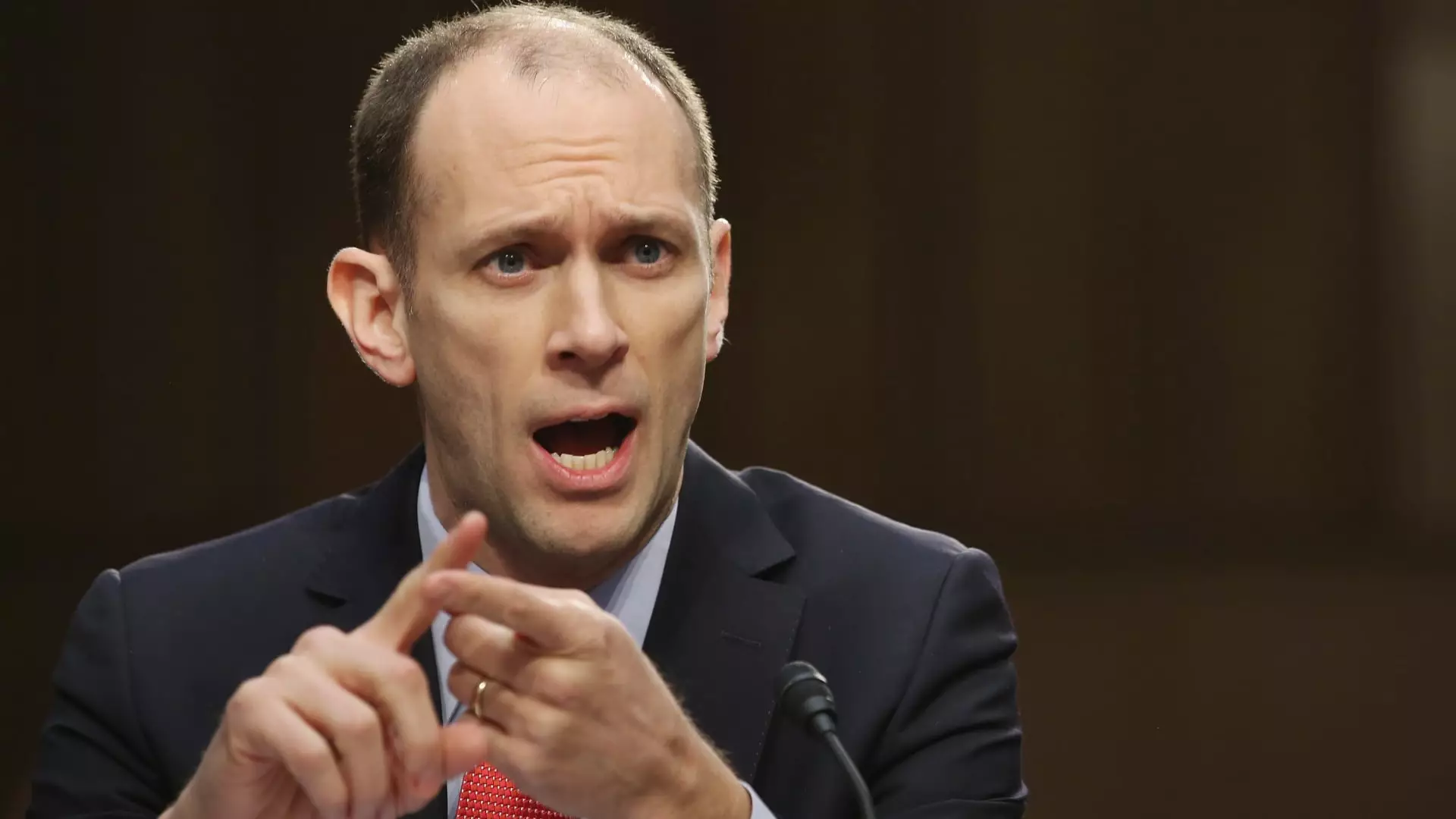In the world of finance and economic policy, uncertainty is often a lurking specter that haunts decision-makers and impacts businesses at every level. Recently, Austan Goolsbee, President of the Chicago Federal Reserve, illustrated this concern during an interview on CNBC, revealing a precarious sentiment brewing among businesses in his region. While Goolsbee maintains a guarded optimism regarding potential interest rate cuts, the atmosphere of unease regarding tariffs and their implications for growth looms large.
Goolsbee’s acknowledgment of this rising anxiety underscores a crucial turning point in the economic narrative. Business leaders are growing cautious, pausing vital capital projects out of fear of what the future holds. It’s not just a fleeting worry; this collective hesitance could capsize not only local economies but also the broader national framework, leading to stagnation at a time when growth should be flourishing. The finance world often romanticizes the concept of a “wait-and-see” approach, but in reality, it can lead to lost opportunities and slow economic evolution.
Mixed Signals from Economists
In tandem with these reflections, New York Fed President John Williams articulated concerns regarding the conflicting signals from recent economic data. When policymakers like Goolsbee and Williams express uncertainty so vocally, it compels market participants to question everything: From where to allocate resources, to whether they should invest in expansion, or simply hunker down and await clarity. The term “uncertainty” has become a distress signal in the Federal Reserve’s lexicon, and its frequent mention echoes a growing apprehension in our economic discourse.
It’s perplexing that the Fed has yet to develop a cohesive strategy to address these mixed signals. While inflation remains relatively stable and unemployment is reported at a low 4%, the impending fear of stagflation hangs over the economy like a cloud. To witness an institution as significant as the Federal Reserve grappling with its directional compass robs the public and businesses alike of essential confidence in future prospects. This indecisiveness may be the ultimate catalyst for economic cooling, as businesses may simply adapt to this lingering apprehension instead of thriving amidst it.
The Tariff Quandary
Despite robust indicators like low unemployment rates, the question still arises: Are tariffs creating a false horizon? Goolsbee argues that tariffs serve only to exacerbate inflationary pressures while simultaneously reducing output—a market paradox. The irony is stark; while policymakers seek to bolster economic growth through direct intervention, they may inadvertently be sowing seeds of economic malaise. Understanding the interplay of tariffs and their broader ramifications should be critical for economic regulators, especially in anticipation of rising prices that threaten to amplify consumer discontent.
There’s an undeniable tension between the pursuit of deregulation and the utilization of tariffs; they serve opposite ends of the economic spectrum. Higher tariffs unravel the fabric of free market effectiveness, potentially stalling growth at a time when bold actions are imperative. In many ways, we are facing a conundrum that reflects a split in policy philosophy—whether to prioritize short-term fiscal advantages or long-term economic stability.
Policy Predictability and Its Dangers
The Federal Open Market Committee recently indicated its belief in the likelihood of interest rate cuts extending into 2025. However, the market reaction has been somewhat alarmist, now pricing in the anticipation of even greater cuts. This disconnect reflects a critical gap in communication between the Federal Reserve and economic stakeholders—one that may lead to instability across industries.
What is particularly disconcerting is the echo of previous eras when indecision led to economic downturns. Can history repeat itself? If the policymakers cannot effectively navigate these waters, businesses and consumers will be left in a precarious position, trapped between the hopes of recovery and the fears of stagnation. Economic leaders must strive for predictability in their messages, moving beyond vague reassurances to specific strategies that can align stakeholder expectations with tangible outcomes.
In this unpredictable landscape, the mantra must shift from waiting for the storm to pass towards preparing to conquer the challenges that lie ahead. The future hinges on whether the Federal Reserve can stabilize itself amid uncertainty and provide the kind of leadership this nation desperately needs.


Leave a Reply